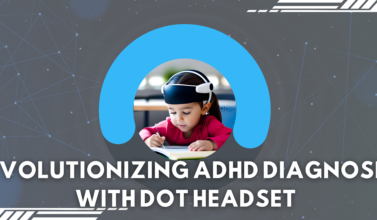For a long time we have seen the concept of Artificial Intelligence in movies, usually in the form of robots. We also interact with AI in our everyday lives, in the form of searching for answers on Google or online shopping on Amazon. In simple words, it’s basic logic that self-improves- it’s ‘intelligent’.
The efficiency and quality of algorithms have advanced significantly to the extent that human-competitive results have recently been achieved in various fields; from self-driven transportation to cyborg technology- the possibilities are limitless.
Technology is rapidly changing with different iterations of devices being enhanced drastically or entirely new concepts emerging from scratch. Between all this chaos, there is some noteworthy emergence in the ‘brain’ sector.
Recently Samsung submitted a patent for a new autonomous driver training model. What stands out is that the AI associated with the machine learning algorithm will use brainwave activity (EEG) as one of its main components. According to Samsung, this would be used to collect various different forms of data such as to evaluate “the changes in a driving environment and dangerous driving circumstances.” However it will also be incorporated with several other metrics such as the “drivers use of turn signals and their manipulation of the vehicles horn, stereo or other instruments” this would be used to build a basic pattern in driving behavior to use as a base to improve on. All of the data together with the other metrics the machine might compile will be used to create the autonomous driving model.
Meanwhile, on the other side of the industry neuroscientists from the University of California San Diego have observed electrical activity that resembles human brainwaves in lab-grown “Mini-Brain” as they call it. The breakthrough may be able to lead us to detect early stages of brain disorders such as epilepsy in infants which is currently considered extremely difficult or impossible. According to the research paper presented at the society for neuroscience, the research team made the use of stem cells to grow mini-brains also known as “organoids” over the duration of 10 months. The cells were grown to form the cortical tissue which is responsible for cognition and analyzing sensory data. Not long after the organoids had been growing, they started to emit signs of electrical activity however it wasn’t synchronized but rather “chaotic” this was found to be strikingly similar to that of premature babies.
How does all of this affect DOT?
Taking a look at Samsung, we know this will not be their last venture into the world of brainwave monitoring devices and many other industry leaders are sure to take part in it as well. This is just the pandora’s box into the core integration of using brainwave activity for function.
With DOT coming back to mind we think; what’s next?
We are not far away from when DOT Headsets would be able to control not only the games on your mobile devices, but drive your car using the same concept- or even move objects!
Glimpsing into the future we can see several uses of our device for emerging concepts. DOT will use AI technology to predict behaviours patterns and disorders, and take preventative measures before it even happens.
Now that this market sector is gaining popularity, we can’t wait for DOT to begin it’s next phase of evolution. The concepts and ideas that will emerge as a result will open a whole new world to us; the potential of which is limitless, and we at DOT will be at the forefront of it!
We would love to hear your thoughts on this, be sure to comment below.


